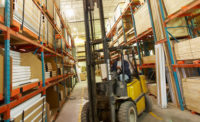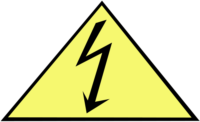Do you know what's going on in your facility?
How to effectively assess, optimize workflow and utilize technology to improve operations

Nuthawut Somsuk / iStock / Getty Images
Efficient facilities management is vital in manufacturing because it directly affects productivity and profitability. Good leadership is a critical part of this process because it helps guarantee every stage of the manufacturing process runs as smoothly as possible.
When personnel manage facilities well, safety improves, production quality rises and costs often fall. For facility managers and manufacturers, focusing on solid facilities management practices means building a foundation for success that supports the people and the machines in their charge.
Assessing current facilities management practices
Review your existing processes, from maintenance schedules to space utilization. Managers should collect data on workflow, production times and resource usage to identify areas for improvement.
By analyzing this information, managers can spot inefficiencies or problems that may slow production or cause unnecessary costs. Once manufacturers can pinpoint these areas, they can devise strategies to address them, which is the first step toward a more streamlined operation.
The role of technology in facilities management
Cutting-edge tools and software are changing the game in facilities management. Digital platforms help monitor everything in real time, from energy use to machine performance.
For example, Internet of Things (IoT) sensors can track conditions on the plant floor, sending alerts for irregularities. Then, maintenance software predicts when machines might need a tune-up, preventing costly downtime.
These technologies give managers a comprehensive view of their operations, allowing them to make quick, informed decisions, reducing waste and increasing efficiency, which keeps the manufacturing process humming along smoothly.
Optimizing workflow through facility layout reorganization
Rethinking your facility’s layout can have various benefits, including reducing unnecessary movement and streamlining the flow of materials. For organizations, real estate is the second most significant expense, and efficient space management can yield up to 30% in savings.
To create a more effective workflow, map out the current process and note any bottlenecks or redundancies. Then, consider grouping equipment and workstations that are part of the same process closer together.
This approach reduces the travel time for materials and people. Consider the ease of access to essential shared resources, like printers or tool cribs, and ensure safety measures are integrated into the layout design to keep your plant safe and efficient.
Incorporating in-plant offices for better oversight
In-plant offices are intelligent solutions for real-time management in manufacturing facilities. Keeping managers close to the action in an office right on the plant floor means they can quickly spot and address issues as they arise, from equipment malfunctions to process bottlenecks.
This setup’s advantages include better monitoring, as managers can observe operations without the delay of traveling to and from distant offices. Communication also gets a boost — when leaders are more accessible, it’s easier for the team to report problems and collaborate on solutions. In-plant offices can also lead to a more responsive and agile management style, where swift and efficient decisions keep the manufacturing process running smoothly.
Sustainable practices for long-term efficiency
Eco-friendly options make excellent business sense for facilities management. By adopting sustainable practices, manufacturers can significantly reduce waste and lower costs. For instance, using energy-efficient lighting and machinery reduces power consumption by up to 30%.
Sustainability leads to better management by encouraging a more resourceful and innovative approach. Facilities that prioritize sustainability often invest in smarter technology and adopt leaner processes, which can improve overall efficiency. Moreover, sustainable practices can boost a company’s reputation, making it more attractive to customers and potential employees who value environmental responsibility.
Training staff for enhanced performance
Training equips employees with the knowledge and skills to adapt to changes effectively. Without proper training, even the best strategies can fall flat because staff are unable to implement them correctly.
Here are things you can do to achieve the best results in staff education:
- Initiate comprehensive training: Begin with detailed sessions that explain the procedures and the reasons behind them.
- Clarify the “why”: Help staff grasp the significance of their contributions to the overall goals.
- Diversify training methods: Employ a variety of educational approaches, including hands-on demonstrations, interactive digital platforms and small group discussions.
- Commit to follow-up: Implement ongoing refresher training and feedback opportunities to reinforce learning.
- Ensure knowledge retention: Regular reviews and evaluations help maintain the correct application of new skills.
By investing in training, facilities can ensure smoother transitions and better adherence to new, more efficient practices.
Regular maintenance schedules to prevent downtime
Planned maintenance is imperative to keep manufacturing operations running without unexpected interruptions. Just as regular health check-ups can prevent illness, routine upkeep can prevent breakdowns that halt production.
Identify the most crucial machines for your operations and prioritize them for regular check-ups to create the most effective maintenance schedules. You can analyze past maintenance records to more accurately forecast future needs and inform your planning process.
These tasks include lubrication, oil changes, setting adjustments, electronics checks and deep cleaning. Your team can utilize maintenance management software to keep track of schedules and alert you to upcoming tasks, making the process more efficient and less prone to human error.
Measuring success and making incremental improvements
Set clear, measurable goals for your facility, like reducing downtime or cutting energy costs. Then, measure current performance against these targets using key performance indicators (KPIs) specific to your operations. Common KPIs that provide meaningful insights include equipment uptime, maintenance costs and response time to issues.
You can encourage continuous improvement by making evaluation and adjustment part of your facility’s routine. Use the data you gather to review performance regularly and ensure your team is open to making changes based on your findings.
For example, if you notice an increase in machinery downtime, investigate and address the root cause promptly. Keep your team involved in this process, encouraging feedback and suggestions. Once you resolve the issue, consider how you may be able to improve performance for even higher productivity.
Powering efficiency in every corner
Improvements from facilities management bolster the bottom line and enhance the workplace culture by fostering a sense of teamwork and pride in well-maintained operations.
For manufacturers aiming to thrive in a competitive market, now is the time to embark on the journey toward better efficiency. Assess your current operations, invest in the right tools and training and commit to a continuous improvement cycle. Improved management leads to a more prosperous, resilient and forward-thinking manufacturing business.
Looking for a reprint of this article?
From high-res PDFs to custom plaques, order your copy today!






